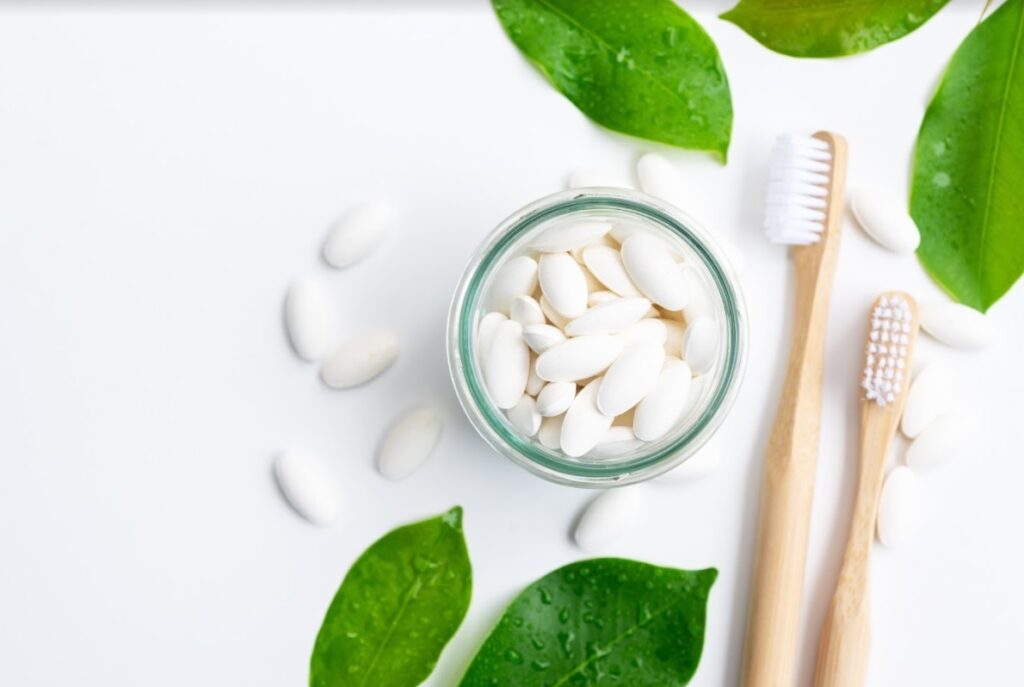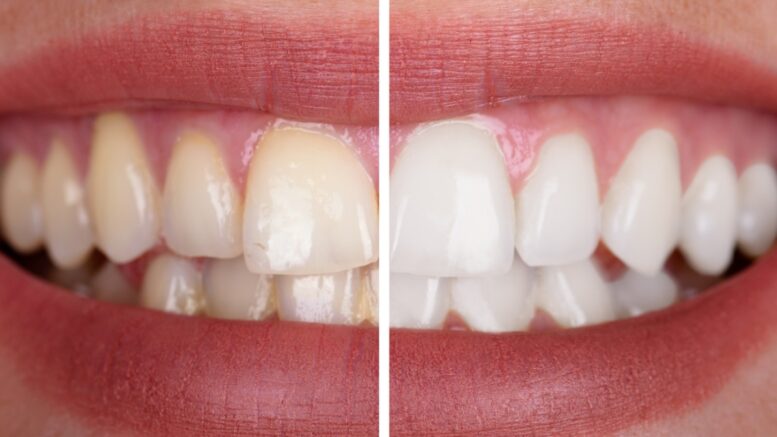As the name suggests, tooth discoloration occurs when your teeth’s color changes from white to yellow or brown. Sometimes you may even see dark or white spots.
Tooth discoloration is a common problem, but it can significantly impact your confidence and smile. Your dentist can help, offering many treatment options to correct teeth discoloration and give you advice on how to prevent it.
What Causes Tooth Discoloration?
Many things can cause teeth discoloration or stains. The most common causes include:
Foods and Beverages
Highly acidic beverages like coffee, tea, and wine can stain teeth. Some fruits also stain teeth, like citrus fruits, blueberries, and cherries.
Tobacco
People who smoke or chew tobacco are more likely to develop gum disease and other oral health problems. Tooth discoloration is also more common in smokers than it is for non-smokers.
Aging
As we age, our enamel gradually begins to wear away and exposes the second layer of the teeth called dentin. This layer is yellowish and softer than enamel.
Injuries
Slips and falls that affect teeth can also cause teeth discoloration. Your teeth’s enamel is also damaged when you chip or break your teeth, causing discoloration or stains.
Medications
Antipsychotics and antidepressants are some medications that can discolor teeth. Hypertension treatments and chemotherapy are also culprits.

Health Conditions
Celiac disease, liver disease, enamel hypoplasia, and calcium deficiency are some conditions that damage enamel and cause changes in your teeth’ color.
Poor Oral Hygiene
It’s not surprising to see stained or discolored teeth in people who don’t brush their teeth regularly. Bad oral hygiene can lead to bacteria growth, plaque accumulation, and tartar. These eventually lead to stained teeth and other oral health problems.
Genetics
Some people were born with strong teeth and thick enamel; some were born with the opposite, and they often have discolored teeth. It goes to show how genetics significantly impacts the color of your teeth.
Different Types of Discoloration
1. Extrinsic
Extrinsic discoloration occurs on the enamel, the teeth’s outermost layer. This discoloration is often due to substances that come into contact with the teeth, such as foods, drinks, and tobacco.
2. Intrinsic
Intrinsic tooth discoloration is often caused by internal factors such as medications, diseases, trauma, injuries, and tooth decay. It’s a condition that causes teeth to turn a more grayish hue.
3. Age-related
Enamel loses its strength with age, making older people more vulnerable to discoloration and other oral health problems. Intrinsic and extrinsic factors may also cause age-related discolorations.
Tooth Discoloration: Treatment
Can tooth discoloration ever be reversed? Yes. However, reversing discoloration caused by conditions like fluorosis or celiac disease is impossible.
Dental hygienists or dentists can prescribe products and procedures depending on the type of discoloration. These may include:
Tooth-whitening Products
Dentists often prescribe whitening strips or toothpaste for extrinsic discoloration. These products may not be effective in treating intrinsic teeth discoloration. Thankfully, professional teeth whitening services at adelaidecosmeticdentistry.com.au can help with both extrinsic and intrinsic discoloration. Not only do they use safe and effective whitening agents, but they also have specialized equipment to ensure an even and long-lasting result.

In-office Treatment
In-office treatments often provide the best teeth whitening results. This is due to the high levels of hydrogen peroxide dentists use to achieve long-lasting and immediate teeth whitening. Regular dental visits and cleanings also help you achieve a whiter and healthier smile.
Home Treatment
Dentists also offer custom-made tooth-whitening trays that you can use at home. You may use them by adding a whitening gel to the tray before wearing them for an hour or as your dentist recommends. You’ll see the results of at-home treatments after a few weeks.
How to Prevent Tooth Discoloration
Teeth discoloration is not something difficult to prevent. According to Century Dental, a dentist in Madeira Beach, some things that can help you prevent stains and discoloration include:
Avoid certain foods and beverages
Avoiding acidic foods and drinks is worth it if you want to avoid stains and discoloration on your teeth. However, this may not be feasible at times. Brush and floss after consuming acidic foods and beverages to ensure your teeth remain unstained and healthy.
Live a healthier lifestyle
We all know that smoking can cause serious health problems. So, quit smoking! It will not only help improve your oral health but your overall health. You should also consume healthy and teeth-friendly foods and drinks to help keep your teeth and body healthy and strong.
Practice good oral hygiene
Daily brushing and flossing will help you have whiter teeth and remove bacteria from your mouth. Regular checkups are a must for keeping your mouth healthy.
Key Takeaway
Tooth discoloration can occur due to certain foods, drinks, and tobacco products. They may also be caused by internal factors like medications, injuries, or tooth decay.
Teeth whitening products and procedures often remove or reduce staining and discoloration. You can either have them done by your dentist at their office or use at-home products.
You may also prevent teeth staining by practicing good oral hygiene, avoiding certain foods and beverages, and living a healthier lifestyle.
